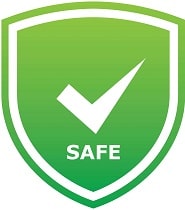Is Sul-Blue Safe in Breastfeeding
Question
I am a breastfeeding mother and i want to know if it is safe to use Sul-Blue? Is Sul-Blue safe for nursing mother and child? Does Sul-Blue extracts into breast milk? Does Sul-Blue has any long term or short term side effects on infants? Can Sul-Blue influence milk supply or can Sul-Blue decrease milk supply in lactating mothers?
Sul-Blue lactation summary

- DrLact safety Score for Sul-Blue is 1 out of 8 which is considered Safe as per our analyses.
- A safety Score of 1 indicates that usage of Sul-Blue is mostly safe during lactation for breastfed baby.
- Our study of different scientific research also indicates that Sul-Blue does not cause any serious side effects in breastfeeding mothers.
- Most of scientific studies and research papers declaring usage of Sul-Blue safe in breastfeeding are based on normal dosage and may not hold true for higher dosage.
- Score calculated using the DrLact safety Version 1.2 model, this score ranges from 0 to 8 and measures overall safety of drug in lactation. Scores are primarily calculated using publicly available case studies, research papers, other scientific journals and publically available data.
Answer by Dr. Ru: About Sul-Blue usage in lactation
An antifungal and antiseborrheic agent, used topically. Since the last update we have not found any published data on its excretion in breast milk. The small dose and low plasma uptake of most topical dermatological preparations make it unlikely that significant amounts will pass into breast milk. There is no cutaneous absorption of selenium sulphide through intact skin (Sánchez 1984), but there may be severe absorption and poisoning if applied to heavily abraded skin (Ransone 1961). Since it is highly irritating to mucous membranes and toxic if ingested, it should not be applied to the chest in order to prevent the infant from ingesting it; if necessary, apply after breastfeeding and clean well with water before the next feed. List of WHO essential medicines: compatible with breastfeeding (WHO / UNICEF 2002).
